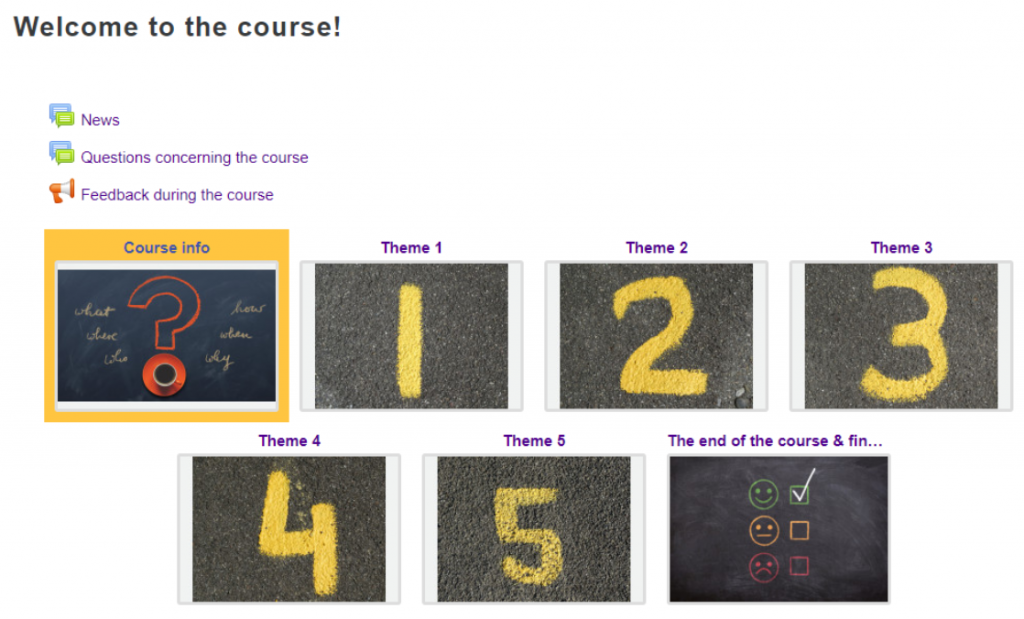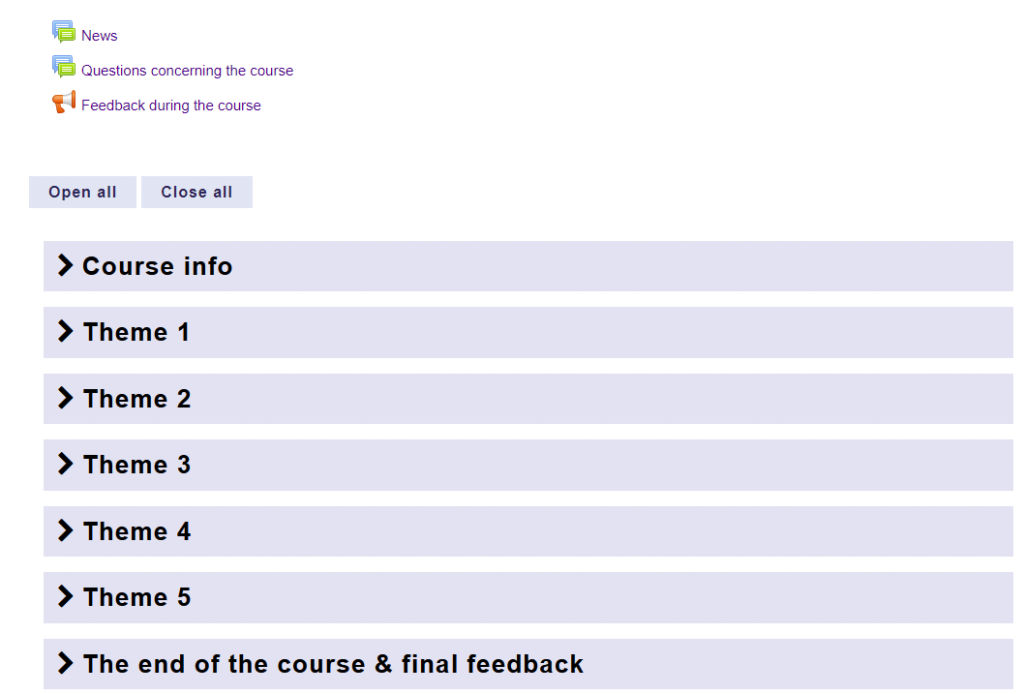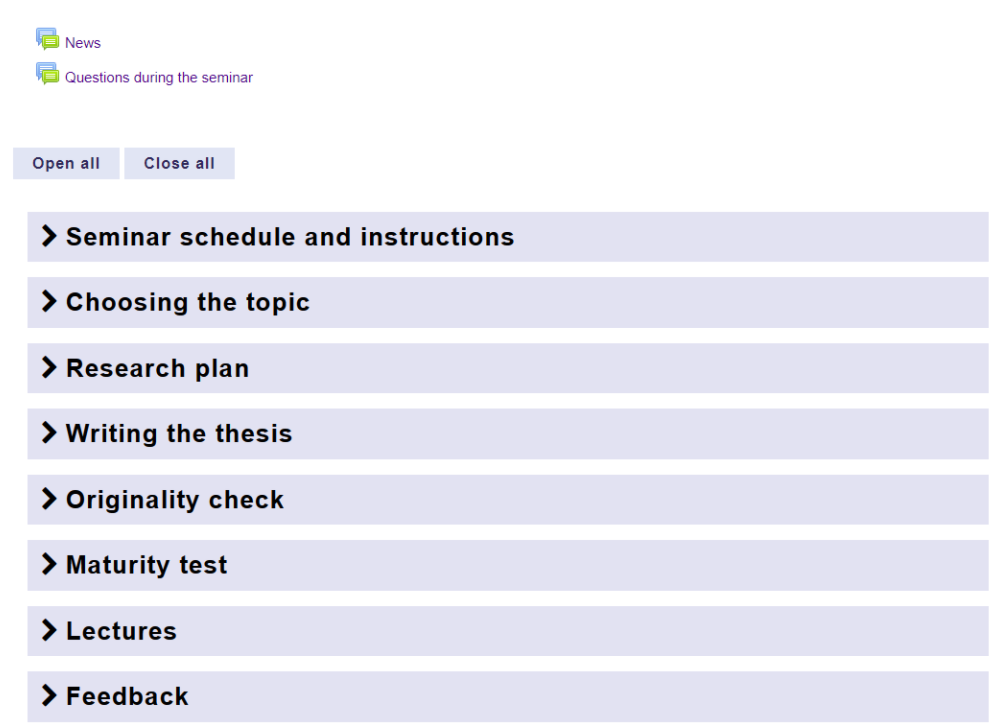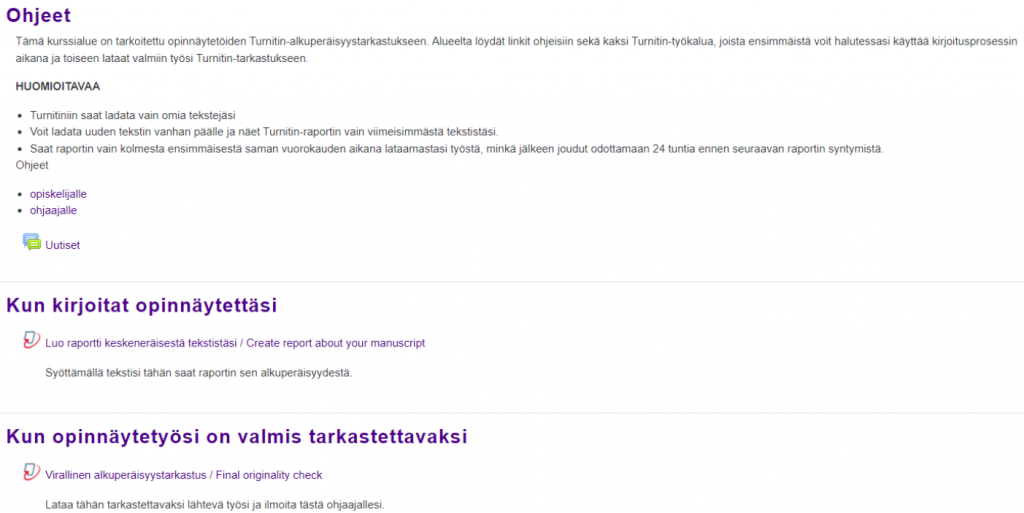The clear and familiar structure of the Moodle area helps students to grasp the content and progress of the course quickly. With the templates available in Moodle, you can easily get started in building the course area. Each template is designed to have a clear structure from which information and materials can be easily found. Use the templates as a starting point or inspiration for creating a course area, however you are free to customize them to suit your own course needs.
What do I need?
Once you have created a new Moodle course in Sisu, Peppi or manually and go to your Moodle course for the first time, you will be able to choose a template.
What do I need to do?
If you have created a new Moodle course in Sisu or Peppi, you will be able to choose a template when you first go to the Moodle area. If you are creating a course manually and want to choose one of the templates for your course structure, fill in the course full and short names and save them at the bottom of the page. Do not change the course format, but select a template from the page that opens after saving.
The following Template options are available:
Default template (Grid), which is specifically designed as the basis for large mass courses offered in contact teaching, but is also suitable for an online course. The template emphasizes visuality.

Default template (Collapsed topics), which is specifically designed as the basis for large mass courses offered in contact teaching, but is also suitable for an online course. The template is especially suitable for courses with a lot of content.

Seminar, which is designed specifically for seminar-type and thesis courses.

Turnitin for thesis supervisors (the template is bilingual, you will see the texts in English if you use Moodle in English).

What should I take into account?
- Before making selection, you can view the templates using the preview buttons. The selected template cannot be changed later.
- Each template is designed to have a clear structure from which information and materials can be easily found. Use the templates as a model or inspiration for creating a course, however you are free to customize them to suit your own course needs.
- Once you have selected a template, first read its instructions. You will find a link to instructions in each template.
